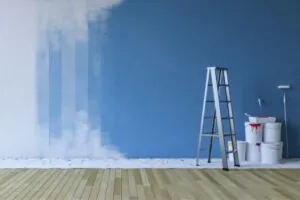Choosing the right paint for exterior trim is not just about picking a color. It is a decision that pits acrylic against alkyd, and requires understanding their unique qualities.
While acrylic paint is water-based, boasting quick drying times and easy clean-up, alkyd paint is steeped in oil. It offers resilience, which many homeowners seek.
Debates on acrylic vs alkyd often hinge on factors like longevity, finish, and the environment where the paint will live.
Each thrives in its own space, which can affect the overall look and maintenance of your home’s exterior. To make a well-informed choice, it is necessary to dive into the specifics of each paint type to learn more about each type.
In this blog, we will compare these two paints and look at the key factors to consider, such as what is acrylic paint, what is alkyd paint, and what are the pros and cons of both?
I. Composition
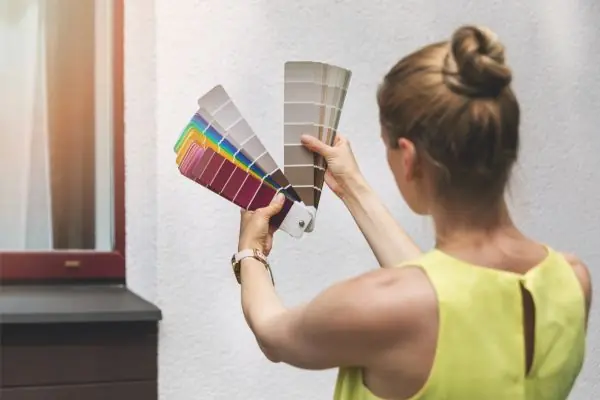
Choosing the right paint between acrylic vs alkyd for a home’s exterior trim is crucial due to harsh weather and temperature changes. Acrylic paint resists UV rays and fading with its latex base, adhering well and needing minimal primer. Alkyd paint bonds tightly to wood, offering a durable finish. Understanding these compositions is vital for maintaining a pristine exterior.
A. Acrylic Paint Composition
Acrylic paint offers superior adhesion to various surfaces, including metal, ensuring a strong bond that resists peeling and flaking, even in fluctuating weather conditions. Its water-based formula is ideal for moisture-prone areas like kitchens, combating rust on metal trims and enduring exposure to water and steam. With its durability, acrylic paint provides long-lasting protection and color retention, minimizing the need for frequent touch-ups or repaints.
Similar Post: Painted Trim Vs Stained Trim
B. Alkyd Paint Composition
Alkyd paint, often enriched with polyurethane, provides a robust shield for exterior trim, offering durability and a smooth finish on wood surfaces. Its oil-based formula penetrates wood fibers, creating a strong bond that withstands time and weather. Professionals favor its viscosity for smooth application, ensuring a lasting sheen and toughness that resists wear and tear over years of exposure.
II. Drying Time
Drying time is crucial for the exterior painting process, affecting usability and protection against smudges. Acrylic paints dry quickly, often within 30 minutes, ideal for fast-paced jobs or unpredictable weather. In contrast, alkyd paints take up to three hours to dry, requiring patience but allowing for meticulous detailing.
Understanding these differences helps homeowners and professional painting contractors choose the right paint for their needs.
Acrylic Paint: Faster Drying Time
Acrylic paint excels in projects requiring speed, like bathroom renovations in Idaho. It dries in just 30 minutes, ideal for homeowners eager to use their spaces soon after painting. This quick drying also benefits professionals, allowing efficient painting schedules without long waits between coats or wood stains. Its rapid setting ensures a swift application, perfect for creating a fresh, protective layer on exterior trims with minimal downtime.
Alkyd Paint: Slower Drying Time
Alkyd paint’s slower drying rate, at more than three hours usually, is valued in meticulous jobs, like cabinetry and other home decor applications. Professionals appreciate the extended drying window, which allows for precise brushwork without rushing. This traditional pace ensures every layer is deliberate, resulting in a flawless finish that endures over time.
Related Post: Update Your Exterior Paint Scheme
III. Decorative Performance
When considering the long-term appeal of exterior trim in connection to acrylic vs alkyd, homeowners often compare acrylic and alkyd paint. Acrylic paint has a binder that ensures excellent gloss and color retention. This maintains a vibrant facade despite environmental challenges. This is crucial when one gallon must cover large surfaces like drywall, ensuring a lasting, beautiful finish.
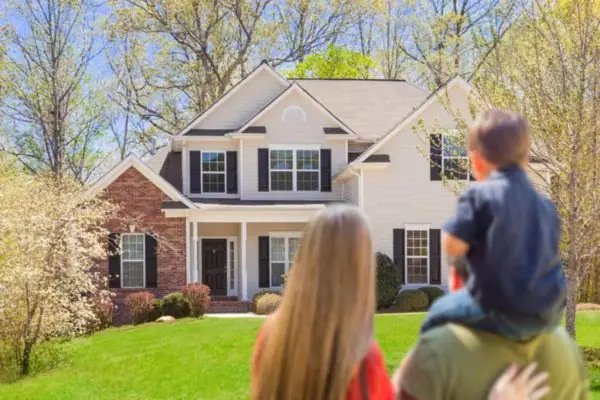
In contrast, alkyd paint, though initially striking, gradually loses its gloss and fades over time. For that, alkyd paint becomes less ideal for enhancing exterior trim.
Acrylic Paint: Excellent Gloss and Color Retention
It is a water-based solution that retains its initial luminosity and saturation over time. This characteristic is particularly beneficial for exterior trim against sun exposure without fading.
The endurance of acrylic paint’s gloss finish plays a lead role in maintaining the aesthetic integrity of a home’s exterior. Acrylic formulations maintain their shine, ensuring a consistently vibrant appearance that homeowners desire.
Acrylic paint’s reputation for color preservation offers an advantage over its oil-based counterparts. It is a protective coat with a steadfast vibrancy that minimizes discoloration during any weather.
Alkyd Paint: Prone to Losing Gloss and Fading Over Time
Alkyd paint, known for durability, gradually loses brilliance and color intensity due to sunlight and weather exposure. Exterior surfaces initially painted with alkyd may dull over time as UV rays fade the finish.
This fading diminishes the vividness of colors chosen, impacting curb appeal. The glossy finish alkyd offers shifts to a flat, matte appearance, aging the trim. In contrast, acrylic paints maintain a resilient sheen, prompting homeowners to consider long-term decorative outcomes when selecting exterior trim paint.
This makes it a great choice for painting around the home where fading and other wear and tear factors might be of major concern for homeowners.
You might like: Interior Color Selection Tips
IV. Characteristics
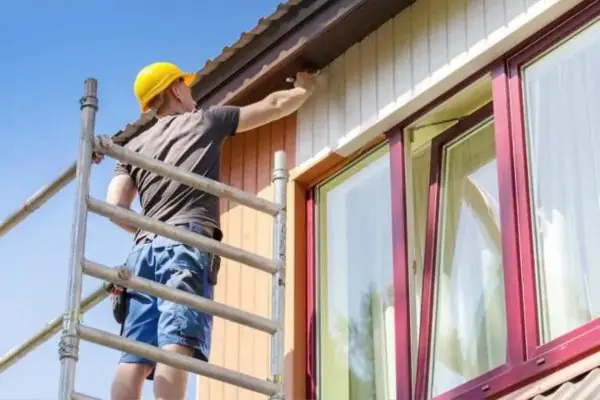
When selecting the best paint for exterior trim, weather, and chemical resistance play pivotal roles. Acrylic paint stands out due to its resilience to harsh conditions and exposure to damaging chemicals. It ensures that exteriors remain unmarred by the changing climates. Acrylic paint provides a reliable defense year-round.
Conversely, alkyd paint does not fare as well in similar conditions. It tends to degrade when exposed to adverse weather and chemicals.
Acrylic Paint: Better Weather Resistance and Resistance to Chemical Corrosion
Acrylic paint’s resilience against weather conditions ensures it remains intact and vibrant on exterior trim, resisting swelling and cracking in extreme climates. Its tolerance to chemicals prevents deterioration when exposed to pollutants or cleaning agents. This makes acrylic paint an ideal choice for protecting exterior trim from harsh conditions, maintaining its aesthetic appeal over time.
Alkyd Paint: Poor Weather Resistance and Resistance to Chemical Corrosion
Alkyd paint doesn’t hold up well under variable weather conditions due to its oil-based composition, leading to potential cracking and peeling on exterior trims. It also struggles against chemical corrosion, reacting aggressively to pollutants and harsh cleaning substances, causing the protective layer to break down. Alkyd paint’s performance declines over time, especially with sun exposure and acid rain, dulling its shine and color. Homeowners may need to repaint more often, prompting a closer look at more enduring alternatives for exterior trim.
VI. Application
The right paint between acrylic vs alkyd paint can elevate a home’s exterior trim from functional to eye-catching. Choosing the right paint and understanding their application are crucial when applying a fresh coat to outdoor spaces. It is more than just color preference that needs to be considered. Homeowners need to be sure they are choosing the right product for the job.
Acrylic paint excels on metal surfaces and in environments needing high corrosion resistance. Alkyd paint is favored for general woodwork and areas where metal does not face severe wear.
This focuses on the application processes of both types and their unique qualities for various outdoor surfaces and uses.
Acrylic Paint: Suitable for High Corrosion Resistance Metal Surfaces and Outdoor Decorative Coatings
Acrylic paints are ideal for metal surfaces exposed to the elements due to their corrosion resistance. They maintain color and gloss over time, keeping exterior trims fresh and appealing. Acrylic paint dries quickly, making it practical for DIY and professional projects. Its low-maintenance requirements enhance and preserve outdoor metal surfaces efficiently.
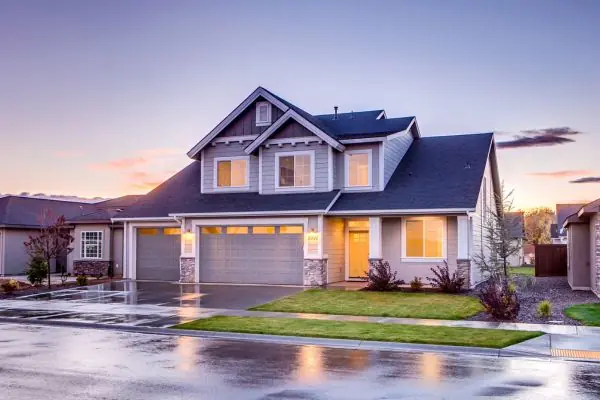
Alkyd Paint: Suitable for General Woodwork, Home Decoration, and Low Corrosion Resistance Metal Surfaces
Alkyd paint is ideal for wood surfaces like doors, window frames, and molding. It penetrates wood fibers, providing a robust, attractive finish and bringing a warm ambiance to home interiors. For metal surfaces in low-impact areas, alkyd paint’s strong adherence forms a durable bond. Decorators prefer it for its rich, high-quality finish, complementing classic designs. Its smooth application ensures elegant results, making it a reliable choice for indoor and protected outdoor spaces.
VII. Price Comparison
Price is often a deciding factor for many homeowners preparing to paint their exterior trim. The overall budget comes into play when assessing acrylic and alkyd paints’ practical and aesthetic benefits. The more money that is available the more options there are for painting materials and products.
Alkyd paint typically comes at a lower price than its acrylic counterpart. This cost-effective option might sway those who focus on upfront savings in their paint selection. Alkyd becomes an attractive choice for budget-conscious projects.
Alkyd Paint: Lower Price Compared to Acrylic Paint
When choosing between acrylic and alkyd paints, homeowners often focus on price. Alkyd paints are more budget-friendly, appealing to those looking to save money on painting projects.
The affordability of alkyd paint is particularly attractive for large renovation tasks. Lower prices allow for complete coverage without compromising quality, keeping costs manageable.
Alkyd’s cost-effectiveness offers initial savings and reduces long-term financial strain. While acrylic paints are more durable and need less frequent repainting, alkyd paint appeals to those prioritizing upfront cost reduction.
Conclusion
Choosing paint for exterior trim depends on the properties of acrylic and alkyd paint and the project’s needs. Acrylic paint dries quickly, resists weather and chemicals, and maintains color and gloss for a lasting finish.
Alkyd paint is budget-friendly and provides a traditional look for woodwork but may fade and deteriorate over time. Homeowners should consider durability, application, and cost to choose the best paint for their home. It can be a long process at the start but with the right help and guidance, you can find the option that is right for your home. Call South Shore Painting Contractors today to learn more and to get started!

